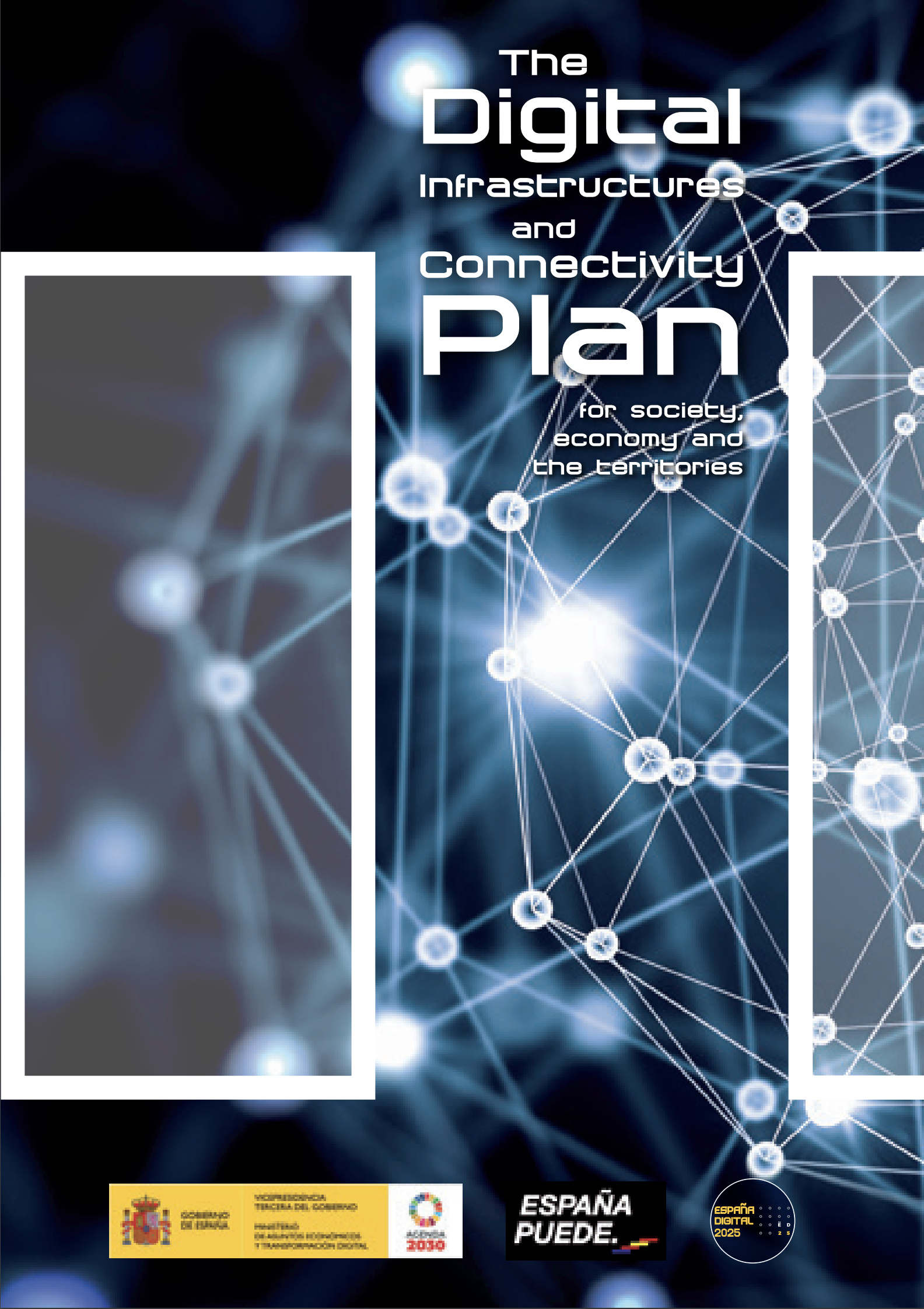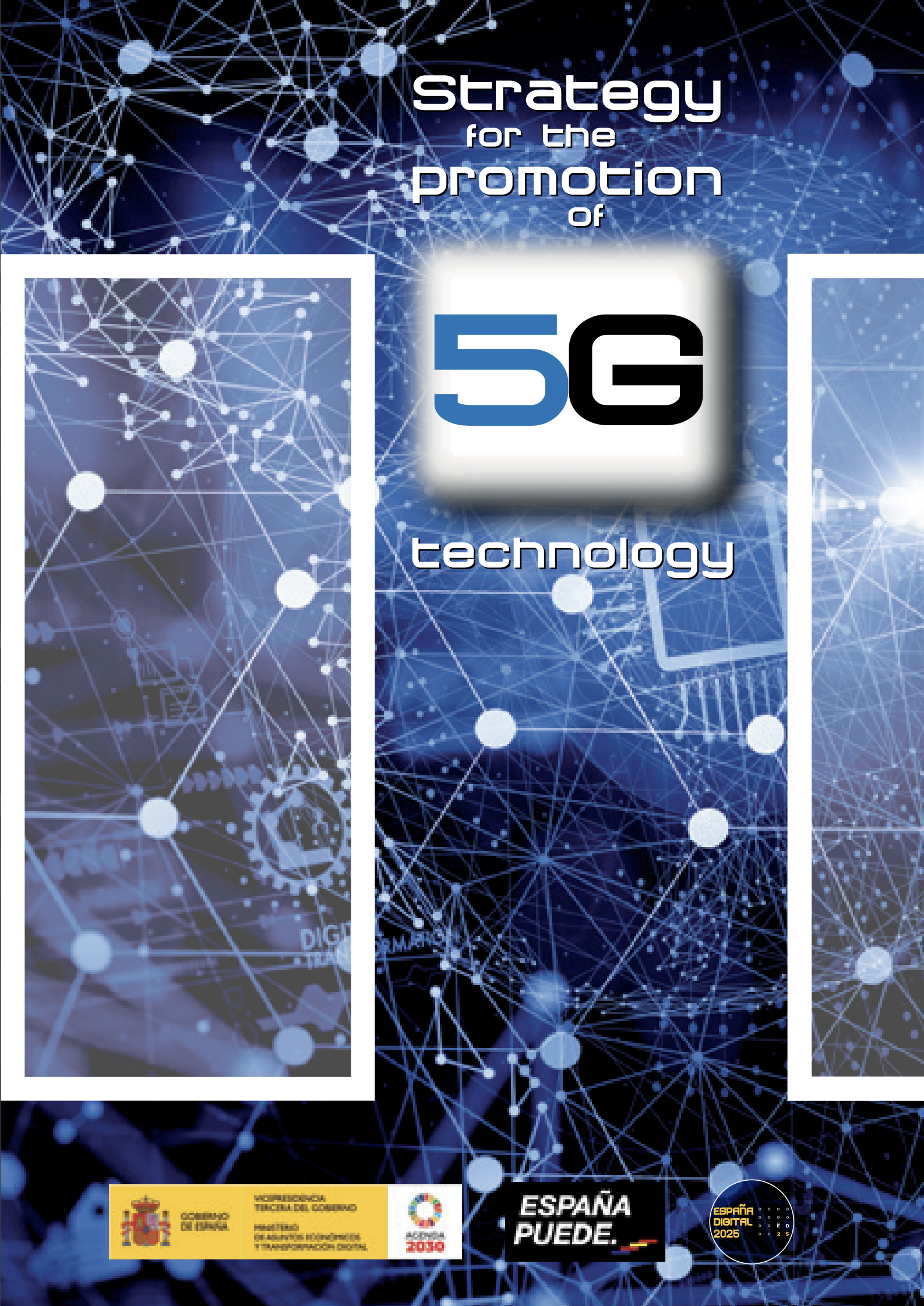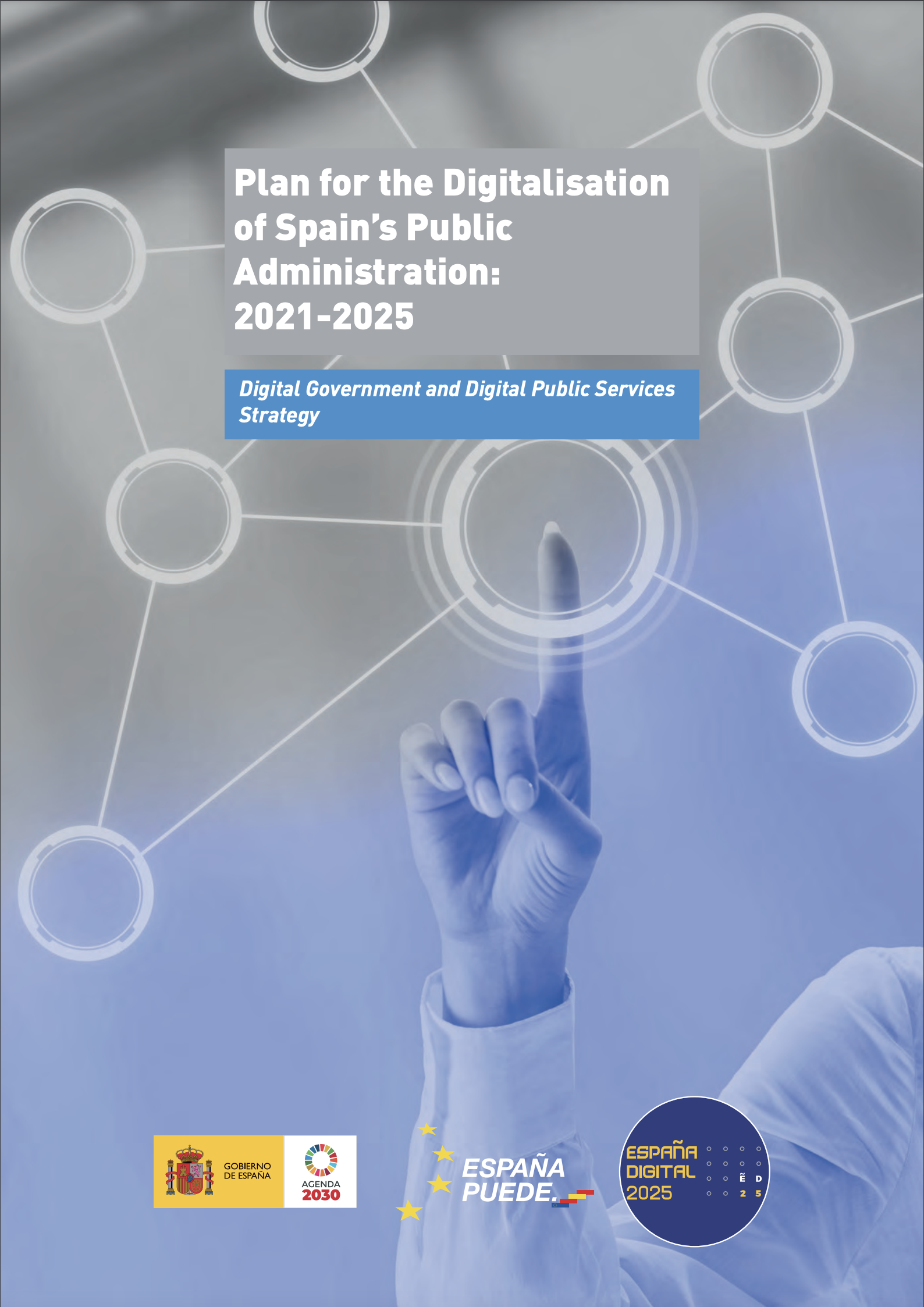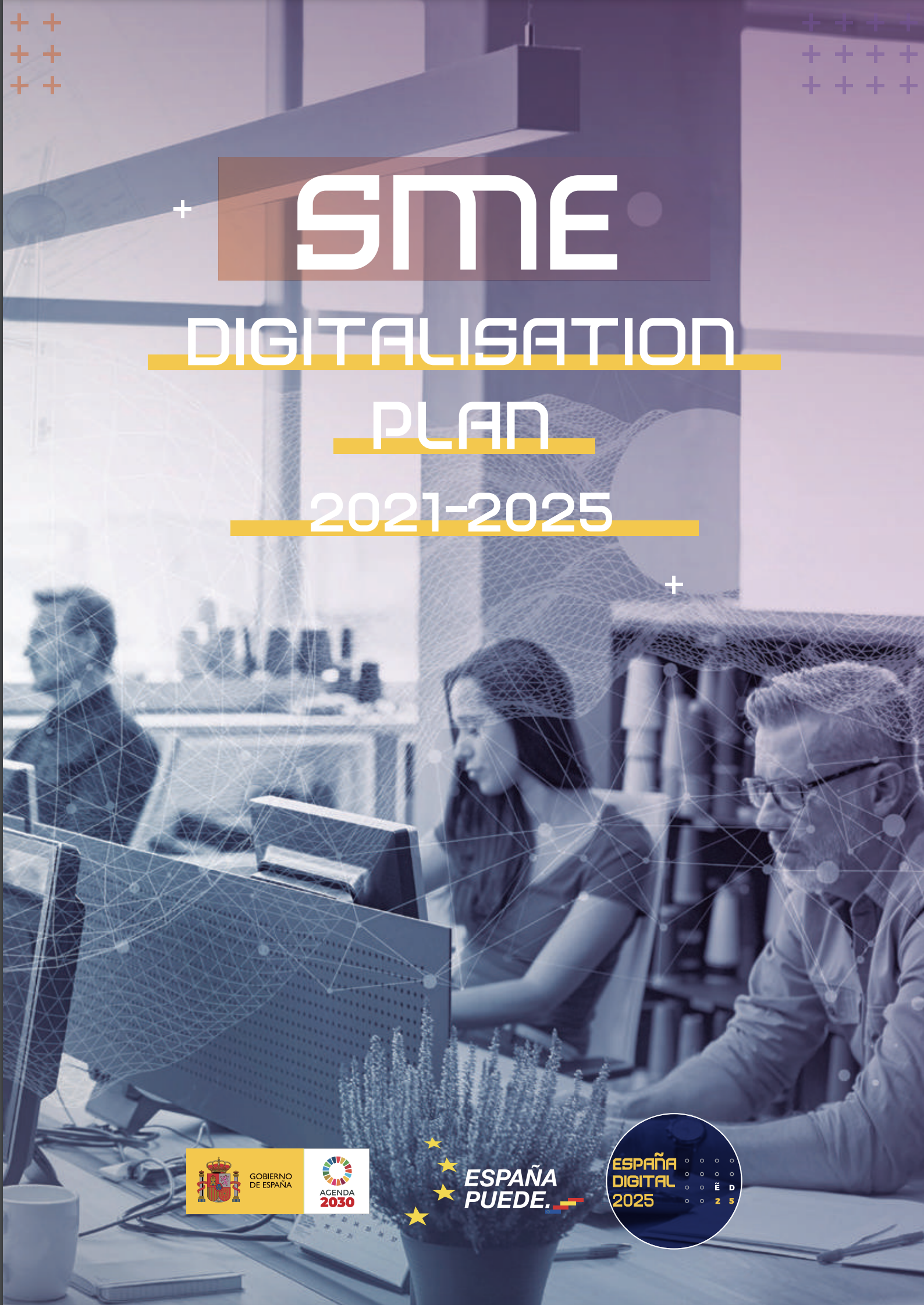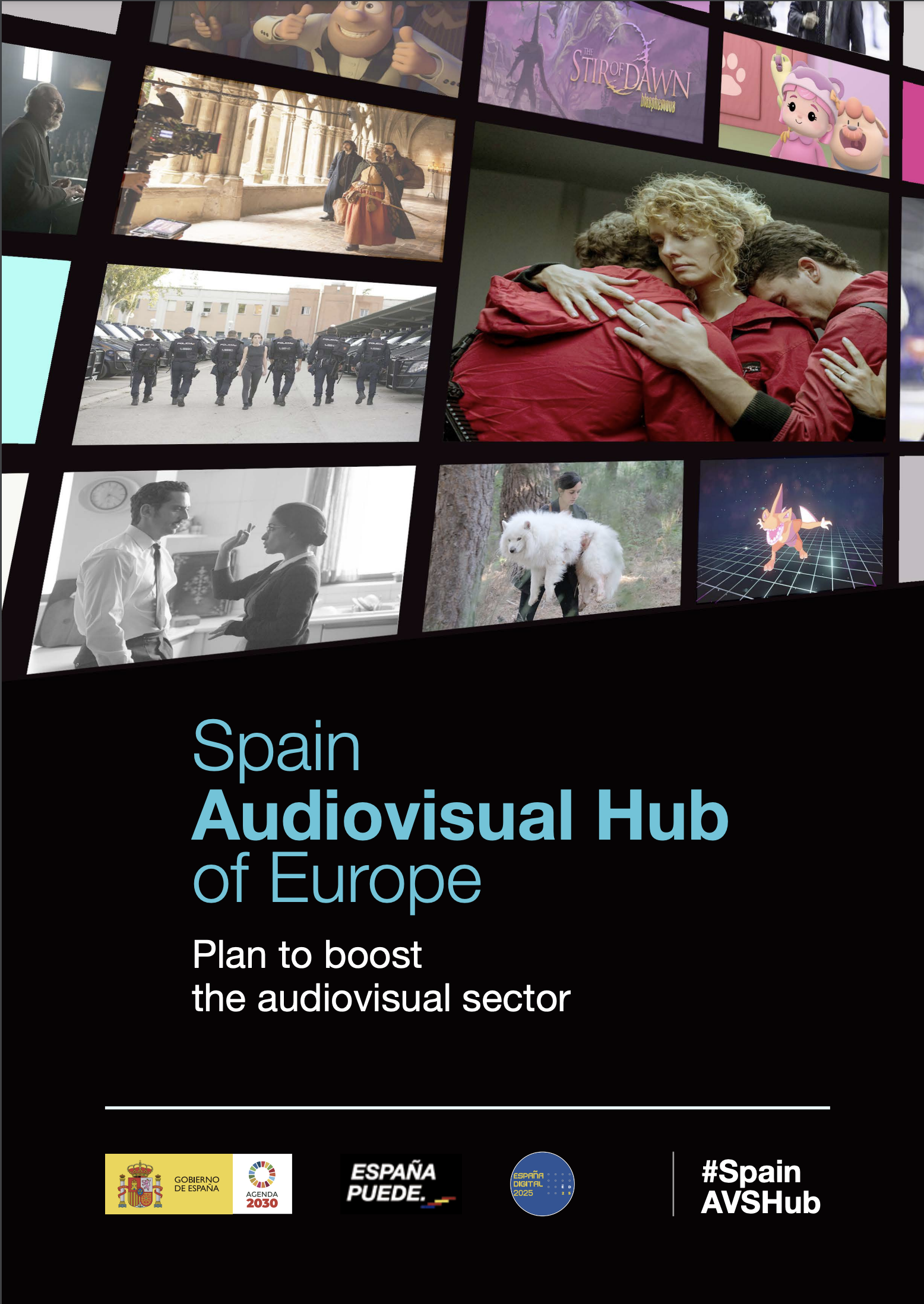Digital Spain Development
Digital Spain and the Recovery, Transformation and Resilience Plan
Structured in 10 policy levers, 30 components and more than 200 measures, the Recovery Plan incorporates an important agenda of investments and structural reforms, which are interrelated and feed back to achieve four cross-cutting objectives: to move towards a greener, more digital, more socially and territorially cohesive and more egalitarian Spain. To this end, it is structured around four main axes:
The second axis of the Recovery Plan, focused on digital transformation, encompass the measures included in Digital Spain, and together with the green transition strategy is one of the main pillars of the Recovery Plan. The dual green and digital transition presents an extraordinary opportunity for the Spanish economy and society and a major challenge in the public and private spheres.
The Plan has a first phase of public investment in digitalisation of 20,000 million euros, with a horizon of 2023 or 2025, depending on the projects. This represents approximately 30% of the foreseen investments with the transfers of the Recovery Plan, an unprecedented volume of resources to invest in digitalisation with a scope and magnitude that will allow for a truly transformative impact.
This axis is in line with the European digital strategy, and serves as a vector for modernisation and prosperity in the medium term, acting on the triple dimension of infrastructure and technology, economy, and people.
Sector-specific digitalisation plans
1
Plan for Connectivity and Digital Infrastructures
This Plan develops the first of the axes contained in Digital Spain 2026 and is aligned with the 2030 Agenda for Sustainable Development. Digital Spain 2026 proposes a cross-cutting objective that responds to the Sustainable Development Goals (SDGs): the use of connectivity and digitisation as tools that contribute considerably to closing the different digital gaps that exist for socioeconomic, gender, generational, territorial, or environmental reasons. The Plan for Connectivity and Digital Infrastructures organizes its lines of action along five axes:
- Extension of broadband to favour territorial structuring
- Connectivity for business
- Spain Data Hub
- Regulatory reforms and Information systems
- Improving infrastructures
2
Strategy for the Promotion of 5G Technology
Its objective is to promote the deployment of 5G in Spain, generate regulatory frameworks that offer security guarantees in this deployment -cybersecurity-, as well as promote measures that facilitate this technology to help the economic transformation of the productive fabric. The planned investment is 2,000 million euros for the period 2021 - 2025. The strategy includes a series of actions encompassed around three main lines of action:
- A radio-electric spectrum enabled for 5G services.
- Effective support for the deployment of 5G networks and services
- A regulatory and administrative framework that encourages the deployment of 5G technology.
3
National Cybersecurity Plan
The National Cybersecurity Plan, endowed with 1,000 million euros and coordinated by the Department of National Security of the Presidency of the Government, foresees nearly 150 initiatives, including actions and projects, for the period 2022-2025.
Among its actions, the following stand out:
- The creation of a national platform for the notification and monitoring of cyber-incidents and threats that will enable the exchange of information in real time between public and private organisations.
- Promoting the implementation of the Cybersecurity Operations Centre of the General State Administration and its Public Bodies.
- The development of an integrated system of cybersecurity indicators at national level.
- Increasing the creation of cybersecurity infrastructures in the autonomous communities, cities, and local entities.
- Promote the cybersecurity of SMEs, micro-SMEs and the self-employed.
- Promoting a higher level of cybersecurity culture.
In addition, the Plan foresees the creation of a monitoring and control system, in order to identify the degree of implementation of the measures and issue an annual evaluation report.
4
National Artificial Intelligence Strategy
The National Artificial Intelligence Strategy (ENIA) is one of the axes of Digital Spain 2026 and one of the components of the Recovery, Transformation and Resilience Plan for the Spanish economy. Its main objective is to provide a reference framework for the development of an inclusive, sustainable, and citizen-centred artificial intelligence. The ENIA has a total of 30 measures structured in 6 strategic axes:
- Boosting scientific research, technological development, and innovation in artificial intelligence.
- Promoting the development of digital capabilities, boosting national talent, and attracting global talent in artificial intelligence
- Developing data platforms and technological infrastructures to support artificial intelligence
- Integrating artificial intelligence into value chains to transform the economic fabric
- Enhance the use of artificial intelligence in public administration and in national strategic missions.
- Establish an ethical and regulatory framework that reinforces the protection of individual and collective rights, in order to ensure social inclusion and welfare.
5
Public Administrations Digitalisation Plan 2021-2025
It is one of the main elements of Component 11 (Modernisation of Public Administration) of the Recovery, Transformation and Resilience Plan. It aims to improve the accessibility of public services to citizens and businesses, ensuring the protection of personal and business data. Furthermore, it seeks to overcome social and territorial digital gaps, while boosting the efficiency of public administrations through the digitalisation of key areas such as health, justice, consular services, or territorial administration in terms of inclusion. It has outlined the implementation of 17 measures organised into three strategic axes:
- Digital transformation of the General State Administration
- High-impact projects in the digitisation of the public sector.
- Digital transformation and modernisation of the Ministry of Territorial Policy and Public Function, Autonomous Communities and Local Entities.
6
SME Digitalisation Plan 2021-2025
The SME Digitalisation Plan 2021-2025 is within the priorities of the Recovery, Transformation and Resilience Plan, the European strategies "Shaping Europe's Digital Future" and the SME Strategy for a Sustainable and Digital Europe.
The significant weight of small and medium-sized enterprises is one of the main characteristics of the Spanish economy. The priority objective of the Plan is to promote the digital transformation of SMEs, as well as business and management training in digital skills. The aim is to increase the productivity of Spanish companies and their possibilities for growth and internationalisation.
At the same time, it aims to structure the necessary actions to mobilise public and private investment in order to maximise progress in the digitalisation of companies and reduce existing gender gaps.
The Plan structures its measures along five axes:
- Basic digitalisation for SMEs
- Support for change management
- Disruptive innovation and digital entrepreneurship
- Support for sectoral digitisation
- Coordination, efficiencies, and reforms
7
Plan to Boost the Audiovisual Sector
The "Spain Audiovisual Hub of Europe" Plan is a plan to boost the audiovisual sector and is one of the cornerstones of the Digital Spain Agenda 2026. It aims to turn Spain into Europe's main audiovisual hub by reactivating the audiovisual production industry, attracting foreign investment, and creating quality jobs. This Plan has set itself the goal of increasing audiovisual production in Spain by 30% by 2025.
The measures of this plan are articulated in four axes based on three priorities:
- Turning Spain into an audiovisual attraction site by reducing administrative and regulatory costs
- Improving the competitiveness of companies through the application of new technologies
- Generating talent by reducing the gender gap
8
National Digital Skills Plan
This Plan is based on the recognition of the need to promote the implementation of digital technologies by the European Digital Strategy, in order to promote a fair and competitive economy by improving the quality of life of European citizens.
Digital Spain 2026 establishes digital skills among its 10 priority axes, with the aim of "strengthening the digital skills of workers and citizens as a whole" and pursuing the goal of achieving that 80% of the Spanish population has basic digital skills by the end of its programming period. In this context, the plan aims to promote the acquisition and improvement of digital skills of citizens in general, with special emphasis on the working population, women, and professionals in the ICT sector. It also seeks to close the current digital skills gap in Spanish citizens by providing a roadmap to identify the necessary measures to ensure the digital inclusion and training of all citizens. It is made up of a total of sixteen measures aimed at improving digital skills in four areas:
- Cross-cutting digital competences
- Digital transformation of education
- Digital skills for employment
- Digital professionals
Governance model
Participating stakeholders
Digital Transformation Advisory Council
To ensure the success of its implementation, Digital Spain contemplates a governance model that ensures dialogue and multisectoral participation of the different agents relevant to the country's digital transition.
To this end, the Digital Transformation Advisory Council was set up in 2020, a collegiate body with the participation of public and private agents that advises and contributes to disseminating the measures and actions of Digital Spain 2026. It also provides guidance in the design of public policy proposals in different areas, including: telecommunications, digital infrastructures, audiovisual communication, digitisation of the economy, the Administration and citizens, the promotion and regulation of digital services, and the promotion of the digital economy and society.
Around 80 social and economic agents related to digital transformation in the country participate in the Council. It is organised through a Plenary that meets annually, and two standing committees that address the actions corresponding to the different axes and measures of ED26:
1. Standing Committee on Telecommunications, Digital Infrastructures, Digital Connectivity, and Audiovisual Sector.
2. Standing Committee on the Digitalisation of the Economy, the Administration, and the Citizenry.
The governance architecture is completed with the Artificial Intelligence Advisory Council, which advises on the design, review and dissemination of AI policies in Spain.

For its part, the Ministry of Economic Affairs and Digital Transformation promotes and cooperates with the co-responsible agents for the implementation of the sectoral plans that develop many of the measures of the Agenda, such as: the Plan for Connectivity and Digital Infrastructures, the Strategy for the Promotion of 5G Technology, the National Digital Skills Plan, or the National Artificial Intelligence Strategy, among others.
It also convenes the appropriate Interministerial Commissions with other ministerial departments and public entities of the General State Administration; coordination with other Administrations, Autonomous Communities and Local Entities, in relation to the implementation of Digital Spain 2026, is carried out through the corresponding Sectoral Conferences.
The Digital Transformation Advisory Council meets in Plenary at least once a year. Since the constitution meeting in October 2020, two meetings of the Plenary of the Council have been held in which progress on the Recovery, Transformation and Resilience Plan has been presented and other key initiatives for the digital transformation of Spain have been discussed.
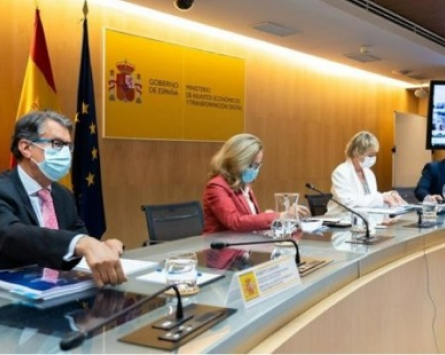
Monitoring
The National Observatory of Technology and Society (ONTSI) is responsible for monitoring Digital Spain 2026. To this end, it generates relevant public information on digital transformation and supports the preparation of evaluation and updating reports on the digital measures developed within the framework of this roadmap.
Annual Report
The National Technology and Society Observatory (ONTSI) will prepare an annual Digital Spain 2026 Implementation Report, which will provide a detailed assessment of the progress made in the different axes and measures. This Report will be presented to the Advisory Council for Digital Transformation, in order to contribute to the evaluation and monitoring of the actions developed within the framework of Digital Spain.

